As electric vehicles (EVs) continue to gain momentum worldwide, thermal management systems have emerged as a critical component in ensuring the safety, efficiency, and longevity of these technologies. From safeguarding battery packs against thermal runaway to supporting high-power charging infrastructure, effective heat dissipation has become a technical imperative rather than an option.
This article delves into the evolving regulatory frameworks that are shaping EV thermal management requirements, while also uncovering the significant market opportunities these changes are creating. By understanding the interplay between policy pressures and technological solutions, suppliers and manufacturers can better position themselves to meet rising demand and deliver value across the EV ecosystem.
In the internal combustion engine era, thermal control was primarily about keeping engines within optimal operating temperatures. However, the transition to electrification has introduced new challenges that extend far beyond simple cooling. Lithium-ion battery cells, power electronics, and inverters generate considerable heat under high load conditions, particularly during fast charging or high-speed driving. Without proper thermal control, battery degradation accelerates, energy efficiency drops, and risks such as thermal runaway or even fire hazards increase. Furthermore, the push for greater energy density and longer driving ranges has led to compact battery designs that are even more thermally sensitive.
As a result, thermal management is no longer just a design afterthought—it is an engineering pillar of every modern EV platform. Regulatory bodies worldwide have recognized this shift and are introducing increasingly stringent standards for temperature control, system reliability, and safety. This trend has created new technical and commercial requirements that thermal solution providers must navigate, while also presenting them with an unprecedented chance to drive innovation and growth.
Thermal safety in electric vehicles is heavily influenced by both international and national regulations. These standards dictate how batteries, power electronics, and cooling systems must be designed, tested, and validated to ensure operational safety under extreme conditions. While the overarching goals—minimizing risk, improving durability, and promoting interoperability—are largely consistent across regions, the specific requirements vary. The table below compares major regulatory frameworks that directly impact thermal management considerations for EVs:
| Region/Country | Standard | Key Focus | Relevance to Thermal Management |
|---|---|---|---|
| United Nations | UN 38.3 | Safety testing for lithium batteries during transport | Requires thermal shock, heating, and short-circuit resilience |
| European Union | ECE R100 Rev. 2 | Electrical safety of battery-powered vehicles | Includes thermal protection against overheating and fire hazards |
| United States | FMVSS 305 | Electric-powered vehicle safety standards | Requires post-crash thermal isolation of high-voltage components |
| China | GB/T 18384, GB/T 31485 | Electric vehicle safety and performance | Specifies thermal stability and propagation resistance of battery packs |
| Japan | JIS D 5305 | Testing methods for hybrid and EV batteries | Includes ambient thermal performance and insulation resistance tests |
| ISO/IEC | ISO 6469-1/2/3, IEC 62660 | International EV battery safety and electrical systems | Covers thermal abuse testing and thermal endurance in electrical faults |
As regulations push the industry toward safer and more efficient thermal systems, they also create real-time market pull. The growth in EV adoption has driven a parallel surge in demand for high-performance thermal technologies that can meet or exceed these compliance thresholds. This demand is visible across all major sub-systems of an electric vehicle, and manifests in several specific application areas:
1. Battery Pack Thermal Management: Precise thermal control is essential to maintain temperature uniformity across all cells. Uneven temperatures can lead to cell imbalances, faster degradation, and reduced overall performance. Liquid cooling systems—either direct or indirect—are now the preferred solution in most high-performance EVs. Additionally, phase-change materials (PCMs) are being adopted for passive cooling, especially in space-constrained hybrid vehicles.
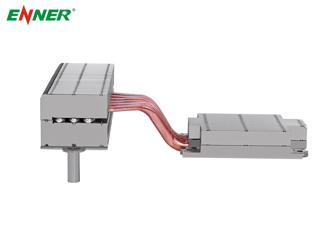
2. Power Electronics and Motor Controllers: Inverters, converters, and motor controllers generate significant heat under high voltage and torque conditions. Effective heat dissipation is crucial for maintaining operational stability and longevity. To address this, manufacturers are incorporating high-conductivity thermal interface materials (TIMs), heat pipes, and vapor chambers directly into their designs.
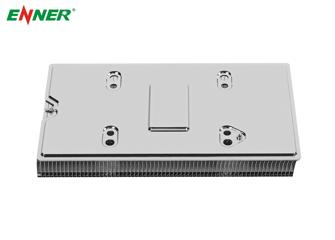
3. Charging Infrastructure: Ultra-fast DC charging systems create intense, short-term thermal loads. Charging rates exceeding 150 kW can rapidly increase the temperature of batteries and surrounding systems. This necessitates the use of high-performance thermal response solutions capable of dissipating heat quickly and preventing safety risks during charging cycles.
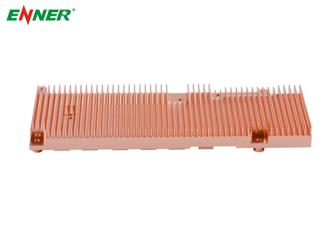
4. Component Miniaturization and Lightweighting: To meet vehicle efficiency and weight reduction targets, automakers are seeking compact, lightweight thermal components that maintain high performance. Thermal systems must now fit into tighter spaces while still meeting compliance standards, further driving innovation in compact design and material efficiency.
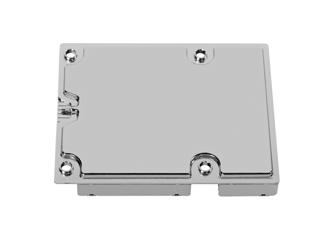
5. System-Level Integration and Simulation: As compliance standards become more detailed, OEMs and Tier 1 suppliers are increasingly demanding thermal systems that are not only efficient but also simulation-ready and compatible with digital validation tools. Regulatory-driven design cycles now rely heavily on accurate thermal modeling, leading to rising demand for simulation-driven thermal product development.
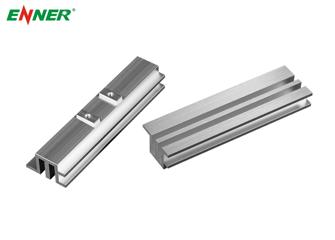
Taken together, these forces are reshaping the competitive landscape for thermal management providers. Companies that can deliver scalable, compliant, and technically advanced solutions across these application areas are well-positioned to capitalize on the regulatory momentum driving EV innovation.
The expanding thermal management landscape is not limited to systems engineering. Significant market opportunities also exist in materials science, component innovation, and precision manufacturing. For example, the demand for high-performance TIMs has grown sharply, with OEMs seeking materials that offer superior thermal conductivity, low outgassing, and strong electrical insulation properties. These materials are used to bridge microscopic gaps between hot components and heat sinks, enhancing thermal transfer while protecting sensitive electronics.
Similarly, advanced aluminum extrusion heat sinks, integrated heat pipe structures, and vapor chambers are becoming standard in both battery and powertrain thermal design. The ability to tightly integrate these components into compact assemblies while maintaining high performance is a competitive advantage for component manufacturers.
Precision machining and CNC capabilities are also critical in this context. The tighter tolerances and complex geometries required for modern thermal modules demand manufacturing expertise that goes beyond standard fabrication. Surface treatments, such as anodizing and nickel plating, are often necessary to ensure corrosion resistance and thermal consistency over time.
Design innovation is another key differentiator. Modular thermal assemblies that can be easily adapted to different vehicle architectures offer flexibility for automakers and reduce time-to-market. Some companies are developing multifunctional components that combine structural support with thermal management, thereby reducing system weight and complexity—an increasingly important factor in the EV segment where every gram counts.
Beyond passenger cars, these trends extend to commercial electric vehicles, electric buses, and even two-wheelers, where thermal performance remains a bottleneck to scale. As the market matures, the emphasis on total thermal system optimization—rather than isolated component efficiency—will become more pronounced.
The intersection of evolving regulation and expanding demand has transformed thermal management into a strategic focus area within the electric vehicle industry. As standards become more rigorous and system complexity increases, the pressure on suppliers to deliver high-efficiency, compliant thermal solutions will only intensify. However, within this pressure lies opportunity—those who can adapt quickly, innovate effectively, and align their offerings with both regulatory and market needs are well-positioned for growth.
At Enner, we recognize the transformative role that advanced thermal management plays in the future of mobility. Through continuous R&D, precision engineering, and close industry collaboration, we are committed to helping automotive partners navigate regulatory complexity and deliver safe, efficient, and high-performance electric vehicles to the world.
By continuing to use the site you agree to our privacy policy Terms and Conditions.